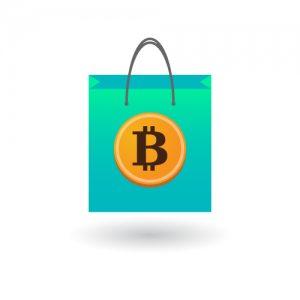The Information Umbrella is taking a well-deserved Winter break.
Check back on January 7 for the next blog post.

 My e-mail is officially out of control. To be more specific, my multiple e-mail accounts are out of control. I have all the right accounts and all of the right devices, but the combination of the two are making e-mail management overwhelming. I have a personal account on my local ISP, a work account, a Gmail account so that I can stay connected to all of the cool Google tools, and two different accounts that I use for services that I think might generate spam.
My e-mail is officially out of control. To be more specific, my multiple e-mail accounts are out of control. I have all the right accounts and all of the right devices, but the combination of the two are making e-mail management overwhelming. I have a personal account on my local ISP, a work account, a Gmail account so that I can stay connected to all of the cool Google tools, and two different accounts that I use for services that I think might generate spam.
In a recent Capstone paper by AIM graduate Jon Dolan titled “Enterprise-Wide
Techniques to Remediate or Avoid Email Overload”, he defines “e-mail overload” as “e-mail users’ perceptions that their own use of e-mail has gotten out of control because they receive and send more e-mail than they can handle, find, or process effectively”. I was able to manage e-mail when I viewed them only on one device, but I now have two laptops, two tablets, a desktop, and a smartphone. It is very easy and convenient to check multiple accounts on each device but it also raises the possibility of reading the same e-mail—or at least subject—multiple times; that is not at all efficient. Fortunately, there are account settings that will help with this problem, but it really comes down to the question as to how often to check e-mail.
How often do you check your e-mail accounts? I think I check mine too frequently. I usually have many balls in the air and I try to keep up on the progress of each of those balls or projects. More often than not though, it tends to disrupt my workflow and break up my day. In other words, this pattern actually makes me less productive, just when it is supposed to improve my effectiveness. One thing that I do in an attempt to consolidate e-mail is to sign up for the daily digest version from several Google or Yahoo groups that I belong to. This means that I get one e-mail from the daily activities. The only problem with this approach is that not everyone else follows my style and I miss entire conversations that go on during the day. I am forced to choose between efficiency and inclusion.
I already use filters in my e-mail accounts, but I need to work even smarter to stay ahead of the load. I need to sort out which account to assign to which device so that I am not reading the same e-mail twice. In other words, I need a better strategy for managing my accounts AND my devices!
Do you have a method for dealing with e-mail overload? When you receive an e-mail, do you feel obligated to respond? What if the e-mail is to you only and not a larger group? How do you distinguish between an informational e-mail and one that requires action? Let me know your thoughts.
 About Kelly Brown
About Kelly BrownKelly Brown is an IT professional, adjunct faculty for the University of Oregon, and academic director of the UO Applied Information Management Master’s Degree Program. He writes about IT and business topics that keep him up at night.
 There has been a wild fluctuation lately in the value of a Bitcoin, which made me take a second look. What is Bitcoin and what is all the fuss? Why the gyrations now? In short, Bitcoin is a virtual currency that is stored and transferred digitally through an electronic wallet. There is strong encryption surrounding the wallet to ensure that only the owner can transfer or trade Bitcoins for goods, services, or other currencies.
There has been a wild fluctuation lately in the value of a Bitcoin, which made me take a second look. What is Bitcoin and what is all the fuss? Why the gyrations now? In short, Bitcoin is a virtual currency that is stored and transferred digitally through an electronic wallet. There is strong encryption surrounding the wallet to ensure that only the owner can transfer or trade Bitcoins for goods, services, or other currencies.
Bitcoin was developed in 2009 and there are two ways that you can secure a Bitcoin (or block of Bitcoins). You can mine Bitcoins by setting your computer to the task of solving increasingly difficult math problems that assist in Bitcoin transactions. You can also buy and sell Bitcoins on currency exchanges such as MTGox. The number of Bitcoins is mathematically capped at 21 million and it is estimated that the last Bitcoin will be issued in 2140.
What fascinates me is the potential of a new currency that is not tied to a country or state and is not regulated by a central bank, yet is tradeable and can be used for commercial transactions. There are several establishments that are beginning to accept Bitcoins for products ranging from a foot-long sandwich to college tuition to attorney services—even a future space journey aboard Richard Branson’s Virgin Galactic! The value of a Bitcoin in the United States has jumped from $13 in January of this year to currently $1,067. Part of the rise in the last two weeks can be attributed to U.S. Senate hearings around virtual currencies, which lent legitimacy to Bitcoin and others.
There are competitors such as Peercoin, Litecoin, and Anoncoin, the latter guaranteeing anonymity by operating in the dark corners of the Internet. All of these competitors hope to cash in on the same speculation that has driven Bitcoin to its current heights. Whether people hoard virtual currencies or spend them for goods and services will be the ultimate test as to how history views them. Will virtual currencies be seen as a speculative bubble, similar to the Dutch “tulipmania,” or, if they become legitimate, a means of trading?
At the end of the day, a currency—virtual or fiat—is really just a medium for exchanging unlike goods and services. The lure of Bitcoin is that it is not yet regulated, it can be traded globally without international constraints, and it does not carry the 2-4 percent transaction fees of credit cards. It relies on the collective power of individual computers on the Internet to process transactions. These are the very same computers hoping to mine new Bitcoins by solving the algorithms necessary to process those transactions. In other words, a very symbiotic relationship as long as there is a lure of potential gain. It is a well thought out system and time will tell whether it becomes a new legitimate currency or succumbs to speculation. Be it Bitcoin or a competitor, I believe that this is the new norm in currency.
Do you own any Bitcoins? Would you invest in Bitcoins or use them as currency? What do you find most attractive about virtual currency? What scares you? Let me know.
 About Kelly Brown
About Kelly BrownKelly Brown is an IT professional, adjunct faculty for the University of Oregon, and academic director of the UO Applied Information Management Master’s Degree Program. He writes about IT and business topics that keep him up at night.
 I have been thinking about technologies that have not yet been fully realized. One that comes to mind is proximity services which has been talked about for at least ten years but is still in its infancy. The idea is that a beacon could send a signal to your phone through the Near Field Communications (NFC) and offer you coupons as you walk by a coffee shop or as you enter a certain neighborhood. In the same vein, if you signed up for a service, you could get notifications when other people on the same service are in your proximity—a high-tech introduction service, if you will. Also, there is the notion that you could use your phone as contactless currency, tickets, boarding passes, and metro fare. Privacy issues aside, some of these services are in place and working now, but we still have a long way to go to fully use the technology available.
I have been thinking about technologies that have not yet been fully realized. One that comes to mind is proximity services which has been talked about for at least ten years but is still in its infancy. The idea is that a beacon could send a signal to your phone through the Near Field Communications (NFC) and offer you coupons as you walk by a coffee shop or as you enter a certain neighborhood. In the same vein, if you signed up for a service, you could get notifications when other people on the same service are in your proximity—a high-tech introduction service, if you will. Also, there is the notion that you could use your phone as contactless currency, tickets, boarding passes, and metro fare. Privacy issues aside, some of these services are in place and working now, but we still have a long way to go to fully use the technology available.
There are phones in Japan now on the FeliCa network that have an embedded chip that allows them to be used as currency or tickets or coupons. Such phones need only come into proximity of a beacon to complete the transaction and do not need to be turned on or have an app engaged. This could make queuing up for a large event quicker and more efficient.
Highlight is an app that lets you enter a profile, then will share it with others and let you see their Highlight profile. The caveat is that you have to be in the same proximity. This is like Match.com except if the signal is good you can actually see the other person before approaching them. Remember, however, that they can also see you, and I don’t know if it matches people by profile before it shares, or if it allows you to see everyone in the vicinity. This could be a great way to introduce each other at a party or a reception or conference. Google Glass will make this even better.
Another novel use of proximity service is the Zabcab app that uses a smartphone’s GPS sensor. A passenger activates the Zabcab app and a driver in the area that is also using Zabcab can see the request and respond. To make it effective, a sufficient number of cab drivers have to use the app, and perhaps this could be a differentiator for the drivers that are early adopters. If effective, this could replace the dispatch call or the competitive hand waving that goes on in large cities.
I think the reason why these services are not more widespread is that we are not yet comfortable with the privacy issues surrounding proximity services. Many of us are not crazy about having ads pushed at us as well. We could always turn off our phone but I think that there is a middle ground that allows us to make use of this technology to improve our lives while protecting our personal information.
Do you use other apps that employ near range proximity sensing? How do you reconcile the privacy issues? Let me know your thoughts.
 About Kelly Brown
About Kelly BrownKelly Brown is an IT professional, adjunct faculty for the University of Oregon, and academic director of the UO Applied Information Management Master’s Degree Program. He writes about IT and business topics that keep him up at night.